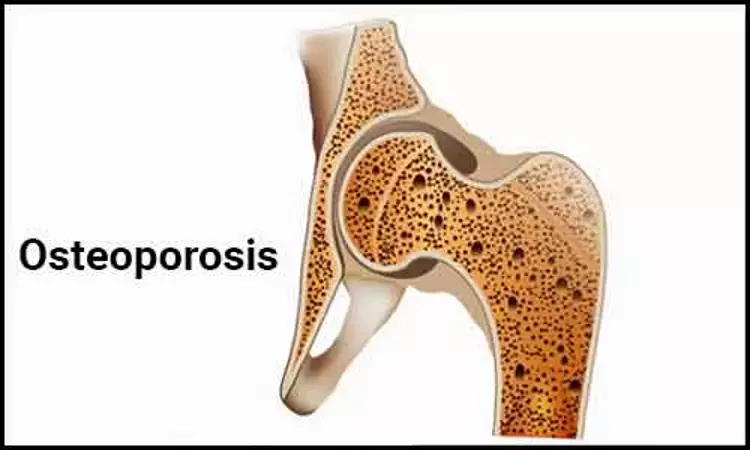- Home
- Medical news & Guidelines
- Anesthesiology
- Cardiology and CTVS
- Critical Care
- Dentistry
- Dermatology
- Diabetes and Endocrinology
- ENT
- Gastroenterology
- Medicine
- Nephrology
- Neurology
- Obstretics-Gynaecology
- Oncology
- Ophthalmology
- Orthopaedics
- Pediatrics-Neonatology
- Psychiatry
- Pulmonology
- Radiology
- Surgery
- Urology
- Laboratory Medicine
- Diet
- Nursing
- Paramedical
- Physiotherapy
- Health news
- Fact Check
- Bone Health Fact Check
- Brain Health Fact Check
- Cancer Related Fact Check
- Child Care Fact Check
- Dental and oral health fact check
- Diabetes and metabolic health fact check
- Diet and Nutrition Fact Check
- Eye and ENT Care Fact Check
- Fitness fact check
- Gut health fact check
- Heart health fact check
- Kidney health fact check
- Medical education fact check
- Men's health fact check
- Respiratory fact check
- Skin and hair care fact check
- Vaccine and Immunization fact check
- Women's health fact check
- AYUSH
- State News
- Andaman and Nicobar Islands
- Andhra Pradesh
- Arunachal Pradesh
- Assam
- Bihar
- Chandigarh
- Chattisgarh
- Dadra and Nagar Haveli
- Daman and Diu
- Delhi
- Goa
- Gujarat
- Haryana
- Himachal Pradesh
- Jammu & Kashmir
- Jharkhand
- Karnataka
- Kerala
- Ladakh
- Lakshadweep
- Madhya Pradesh
- Maharashtra
- Manipur
- Meghalaya
- Mizoram
- Nagaland
- Odisha
- Puducherry
- Punjab
- Rajasthan
- Sikkim
- Tamil Nadu
- Telangana
- Tripura
- Uttar Pradesh
- Uttrakhand
- West Bengal
- Medical Education
- Industry
Two Widely used Erectile Dysfunction Drugs may help Treat Osteoporosis

UOsteoporosis is a global public health problem that affects almost 200 million people worldwide. Erectile dysfunction is the most common male sexual dysfunction in the aging population, with more than 70% of men over the age of 70 suffering from this.
Two seemingly unrelated multifactorial diseases share a very important molecular pathway. PDE5A inhibitors are widely and safely used drugs for erectile dysfunction. The research shows that both drugs act in the formation of new bone and reduced removal of old bone. Due to this, the drugs could potentially be utilized for co-treating erectile dysfunction and osteoporosis in men of advancing ages, as well as for treating osteoporosis in postmenopausal women. The new research has been published in the Proceedings of the National Academy of Sciences.
The objective of the research was to examine the comprehensive skeletal effect of blocking phosphodiesterase (PDE) 5A, an enzyme that affects cell signaling in blood vessel walls. Inhibiting PDE5 can relax muscles and increase blood flow to specific areas of the body. The team focused specifically on two PDE5 inhibitors; tadalafil and vardenafil.
The researchers found that thehe target enzyme, PDE5A, was found to be expressed in mouse skeletal tissue and human bone cells. It was also shown in precursors of osteoblasts, cells responsible for bone formation. Both drugs that block PDE5A enhanced osteoblastic bone formation and significantly increased bone mineral density in mice. Overall, the direct effect on the bone from tadalafil and vardenafil resulted in a net bone gain.
These findings support testing of the two commonly-used erectile dysfunction drugs in the hopes of a potential treatment involving patients with osteoporosis.
This is a remarkable study suggesting that a common class of FDA-approved medications that have a proven safety record for erectile dysfunction for men and pulmonary hypertension for both women and men can be repurposed for osteoporosis treatment, said Dr Mone Zaidi, MD, PhD, MACP, Director of the Mount Sinai Bone Program and Professor of Medicine .
Hina Zahid Joined Medical Dialogue in 2017 with a passion to work as a Reporter. She coordinates with various national and international journals and association and covers all the stories related to Medical guidelines, Medical Journals, rare medical surgeries as well as all the updates in the medical field. Email: editorial@medicaldialogues.in. Contact no. 011-43720751
Dr Kamal Kant Kohli-MBBS, DTCD- a chest specialist with more than 30 years of practice and a flair for writing clinical articles, Dr Kamal Kant Kohli joined Medical Dialogues as a Chief Editor of Medical News. Besides writing articles, as an editor, he proofreads and verifies all the medical content published on Medical Dialogues including those coming from journals, studies,medical conferences,guidelines etc. Email: drkohli@medicaldialogues.in. Contact no. 011-43720751


